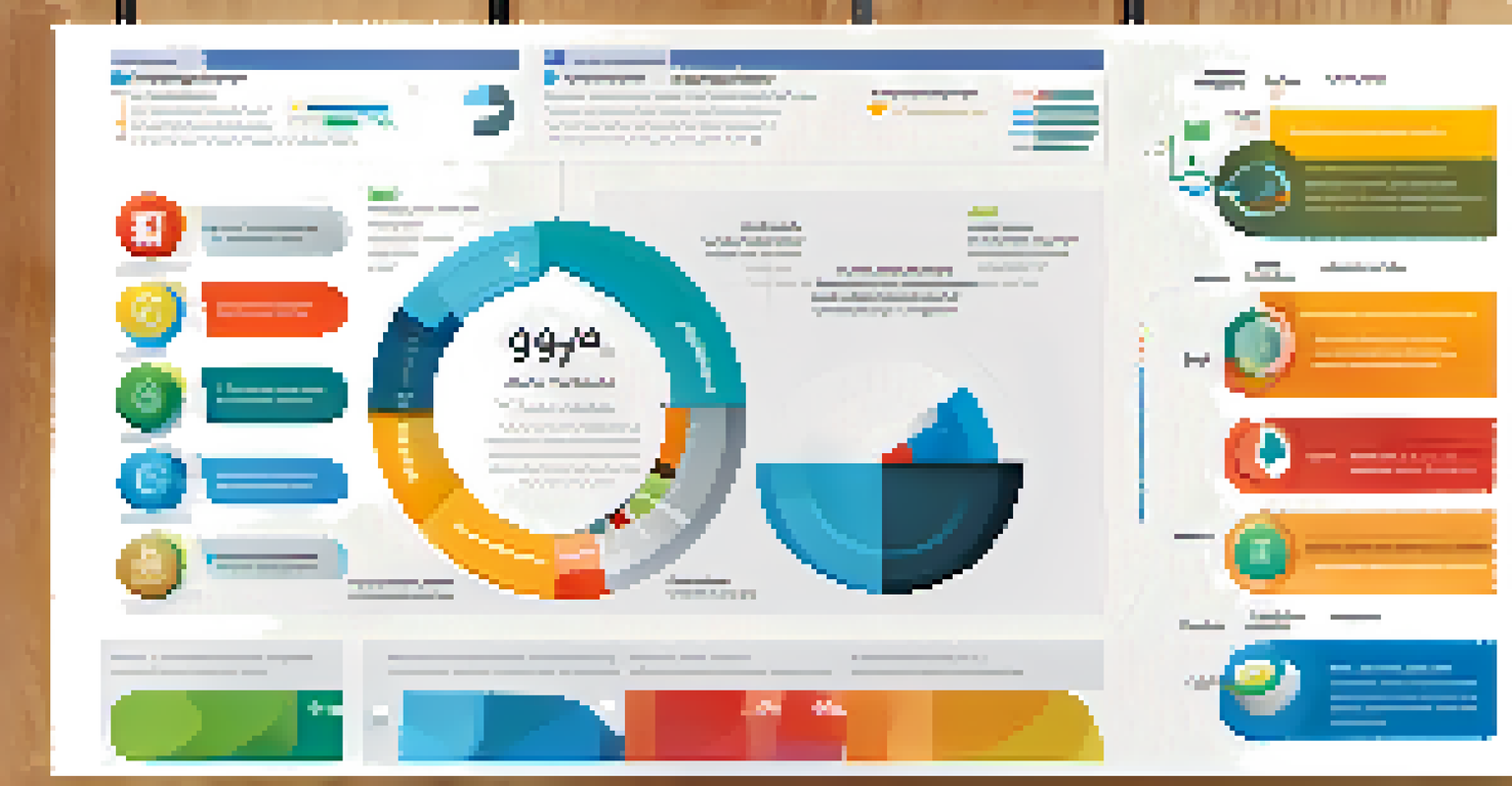Key Metrics in Learning Analytics for Educators

Understanding Learning Analytics and Its Importance
Learning analytics involves collecting and analyzing data about learners and their contexts. This practice helps educators understand how students engage with content and identify areas for improvement. By utilizing learning analytics, educators can tailor their teaching strategies to meet the diverse needs of their students.
Without data, you're just another person with an opinion.
Imagine trying to navigate a maze without a map; that’s what teaching can feel like without data. Learning analytics provides that map, guiding educators toward effective practices and interventions. Overall, this approach not only benefits individual learners but also enhances the educational experience as a whole.
As we dive into key metrics, keep in mind that the ultimate goal is to foster a more personalized and effective learning environment. It's about understanding students better and making informed decisions that can positively impact their educational journeys.
Engagement Metrics: Gauging Student Interaction
Engagement metrics are crucial for understanding how actively students participate in learning activities. These can include data on time spent on tasks, participation in discussions, and completion rates for assignments. By analyzing engagement levels, educators can identify students who may be struggling or disengaged.

Think of engagement metrics as the heartbeat of a classroom. If the heartbeat is weak, it signals a need for intervention. For instance, if a particular assignment sees low completion rates, it might be time to reassess its difficulty or relevance to the students’ interests.
Importance of Learning Analytics
Learning analytics helps educators tailor their teaching strategies to enhance student engagement and improve educational outcomes.
Tracking engagement isn't just about numbers; it's about fostering connections. When educators notice trends in engagement, they can adapt their methods, creating a more inclusive and stimulating learning environment.
Achievement Metrics: Measuring Academic Success
Achievement metrics provide insights into student performance and learning outcomes. These metrics often include test scores, grades, and completion rates for courses or programs. By analyzing this data, educators can assess whether their teaching methods are effectively facilitating learning.
What gets measured gets managed.
Imagine you're a gardener; achievement metrics are like the flowers blooming in your garden. They reflect the health of the learning environment you've cultivated. If certain areas are not flourishing, it prompts a closer look at the factors contributing to this result.
Using achievement metrics enables educators to set benchmarks and goals for their students. This process not only highlights successes but also identifies opportunities for growth, ensuring that every student has a path to success.
Retention Metrics: Understanding Student Persistence
Retention metrics look at how many students remain enrolled in a course or program over time. High retention rates often indicate that students are finding value in their learning experience, while low rates can signal underlying issues. Understanding these patterns helps educators implement strategies to support student persistence.
Think of retention metrics as a safety net for educators. They help identify at-risk students who may need additional support or encouragement. For instance, if a large number of students drop out after a particular module, it may be time to reevaluate the content or teaching approach used.
Engagement and Retention Metrics
Analyzing engagement and retention metrics allows educators to identify at-risk students and implement timely interventions.
By focusing on retention, educators not only enhance student success but also foster a community where learners feel valued and supported. This sense of belonging can be pivotal in keeping students engaged and motivated.
Learning Pathways: Tracking Individual Progress
Learning pathways are personalized routes that students take throughout their educational journey. By tracking these pathways, educators can gain insights into individual learning patterns and preferences. This data can help tailor instruction to better suit each student's unique needs.
Imagine each student as a traveler on a journey; learning pathways map their route. By understanding where they excel and where they struggle, educators can provide the necessary guidance and resources. This individualized approach can significantly enhance learning experiences.
Utilizing learning pathways not only promotes personalized learning but also empowers students. When they see their progress visually, it can motivate them to take ownership of their educational journey.
Predictive Analytics: Anticipating Student Needs
Predictive analytics uses historical data to forecast future student performance and behaviors. This proactive approach allows educators to identify students who might need intervention before challenges arise. By acting early, educators can implement support measures that help keep students on track.
Think of predictive analytics as a weather forecast for education. Just as you might prepare for a storm, educators can prepare for potential academic hurdles. For example, if data suggests that students who struggle with certain concepts tend to perform poorly on assessments, interventions can be introduced proactively.
Continuous Improvement in Education
Utilizing key metrics fosters a culture of continuous improvement, enabling educators to adapt their practices for better student success.
This forward-thinking approach transforms data from a retrospective tool into a proactive strategy for success. By anticipating student needs, educators can create a more supportive and responsive learning environment.
Feedback Metrics: The Role of Student Input
Feedback metrics gather student opinions on their learning experiences, helping educators understand the effectiveness of their teaching. This feedback can come from surveys, evaluations, and informal discussions. By valuing student input, educators can make adjustments that enhance the learning environment.
Imagine feedback metrics as a mirror reflecting the classroom's dynamics. They reveal how students perceive their education and what changes might improve their experience. For instance, if many students express confusion over a specific topic, it may be time to revisit that material in a different way.

Incorporating student feedback not only helps improve teaching practices but also fosters a sense of community. When students feel heard, they are more likely to engage and invest in their learning.
Utilizing Metrics for Continuous Improvement
The ultimate goal of analyzing these key metrics is to foster continuous improvement in educational practices. Educators can create a feedback loop where data informs instruction, leading to better outcomes for students. This ongoing process ensures that teaching methods remain relevant and effective.
Think of continuous improvement as a never-ending journey towards excellence. Just as a good athlete constantly sharpens their skills, educators must embrace evaluation and adaptation. By regularly reviewing metrics, they can identify trends and make informed decisions.
Emphasizing continuous improvement cultivates a culture of learning among educators as well. When teachers see the impact of their adaptations, it encourages collaboration and innovation, ultimately benefiting students.